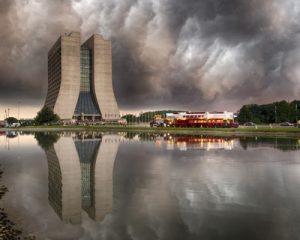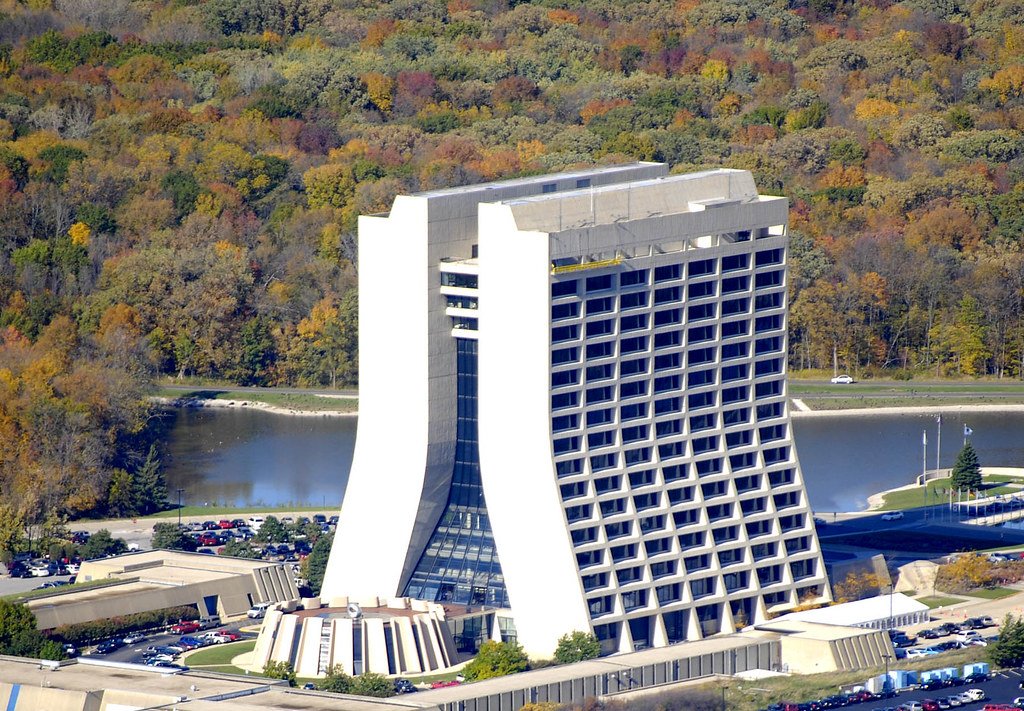
Original article found here: https://news.fnal.gov/2020/06/fermilab-scientists-publish-quantum-computing-course-for-high-school-students/
Fermilab regularly makes fundamental science discoveries and is a world leader in quantum physics. In 2019, it launched the Fermilab Quantum Institute, which conducts world-class research at the leading edge of quantum computing and information science, laying the groundwork for critical physics calculations to be performed on quantum computers. As such, Fermilab is an ideal place to bring together particle physics and quantum computing as two complementary fields.
During the summer of 2018, three of us in the Fermilab Theoretical Physics Department applied to mentor two high school teachers, Anastasia Perry and Ranbel Sun. With STEM education in mind, we thought this was an ideal opportunity to share the exciting and disruptive technology of quantum computing.
After surveying the available resources on quantum computing, we discovered that while popular science articles and advanced textbooks existed in abundance, the material for high school students was decidedly lacking.

We decided to fill the gap: During the summer, Anastasia and Ranbel met with us several times a week to discuss the foundations of quantum mechanics, quantum computing and how to best present this information to a high school level audience. They read a vast amount of quantum computing material, distilled it to the simplest parts and created the module at an appropriate comprehension level. Together, we decided students should learn about quantum concepts including superposition, qubits, encryption, quantum measurement, entanglement, teleportation and their real-world applications.
Once the summer was over, all of us continued to work on the material, creating attractive figures, improving readability and adding information on recent quantum computing developments (research really does change that quickly!). Finally, the information was collected into a single book. Working together with such a motivated and intelligent group ensured the whole process was exciting and fun.
Our group developed a course, “Quantum Computing as a High School Module,” which is available on the open-access archive arXiv and also forms part of The Quantum Daily’s QC101 page. The course is the first on quantum computing designed for U.S. high school students, but it is also useful for a quantum-computing-curious public. The teachers ensured that the material is at the appropriate level, and we ensured that the science is sound.
We created the course to guide students through various aspects of quantum computing without relying on prior knowledge of quantum mechanics. Conceptual ideas are reinforced with active learning techniques, such as interactive problem sets and simulation-based labs at various levels. We’ve heard that the walkthrough exercises that use IBM’s real quantum computer to build a Schroedinger’s worm (equivalent to the cat) have been a real hit.
We tested the material through trial runs and received positive feedback from multiple sources. In the trial runs, we conducted surveys before and after the students took the course and found that they successfully learned about quantum computing and had a high level of enthusiasm for it. One student even commented “we should replace special relativity with quantum computing next year.”
This spring, we submitted to journal The Physics Teacher an article in which we analyze student feedback.
The course has seen remarkable success since its inception. We have been contacted by people from all over the world, including high school teachers in Brazil and education researchers in the Netherlands. The American Association of Physics Teachers is excited to collaborate with us on future quantum computing pedagogy workshops and to create nationwide impact in quantum computing education for high schoolers.
Quantum computing will affect the future of every area of science, so the need for a quantum-fluent workforce is great. With this quantum computing course, Fermilab scientists are breaking new ground in both quantum computing research and ensuring the competitiveness of the STEM workforce in the quantum era.
Ciaran Hughes, Joshua Isaacson and Jessica Turner are theoretical physicists at Fermilab.
















